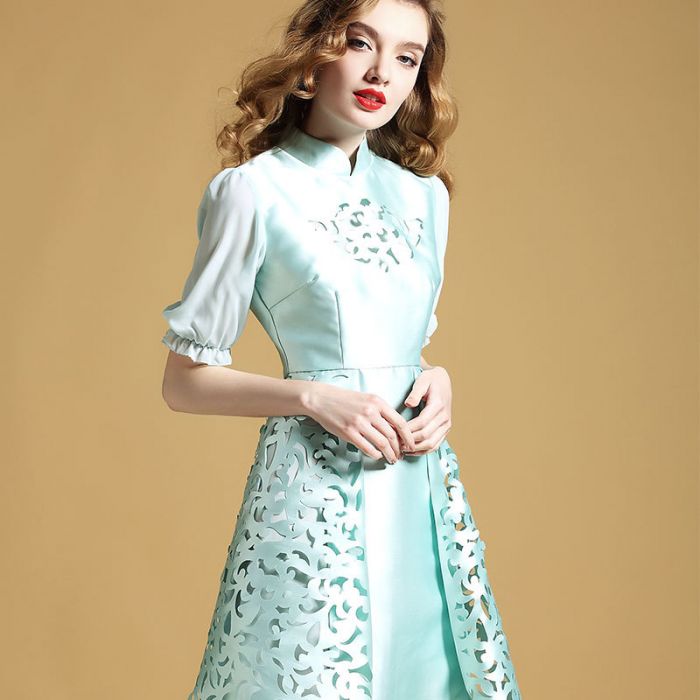Introduction: The Cheongsam in Contemporary Fashion
The cheongsam, also known as qipao, is a classic symbol of Chinese femininity and elegance that has endured through centuries of cultural shifts. This traditional garment has evolved from its Qing Dynasty origins to become a fixture in modern fashion, bridging the gap between historical attire and contemporary style. Today, the modern cheongsam celebrates both its rich heritage and the innovative spirit of the fashion industry, resulting in a garment that not only pays homage to its past but also embraces the future.
The Development of the Modern Cheongsam
History Meets Modernity
The transition of the cheongsam from a traditional garment to a modern staple is a testament to its versatility and timeless appeal. While traditional cheongsams showcased ornate patterns and were constructed from silk or brocade, the modern cheongsam experiments with an array of fabrics like lace, chiffon, cotton, and even leather. Design elements such as cap sleeves, asymmetrical cuts, and daring slits come together to create a garment that maintains the classic silhouette while offering a fresh, contemporary look geared toward the fashion-forward individual.
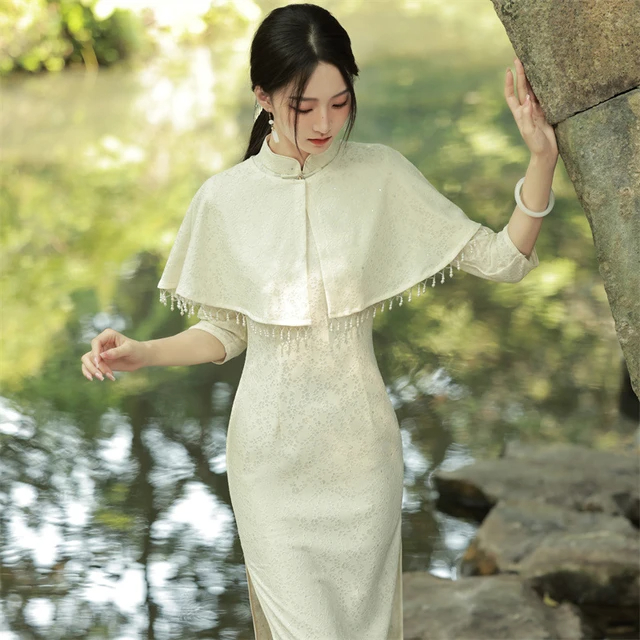
Redefining the Cheongsam for the Modern Woman
As society progressed, so did the expectations and roles of women, leading to a demand for a more practical and versatile cheongsam. Contemporary designers have answered this call by tailoring the dress to suit the lifestyle of the modern woman, offering comfort without sacrificing elegance. Innovations include the incorporation of stretch fabrics for ease of movement, simplified closures replacing intricate frog buttons, and the introduction of versatile lengths suitable for various occasions from casual outings to formal events.
Influence of Global Fashion Trends
Global fashion has had a significant impact on modernizing the cheongsam. Designers from around the world draw inspiration from the cheongsam’s iconic structure while incorporating cross-cultural styles and aesthetics. The result is a hybrid fashion piece that celebrates diversity and global connectivity. This has led to a cheongsam that not only reflects traditional Chinese beauty but also embodies a cosmopolitan spirit, appealing to a wide array of tastes and cultural backgrounds.
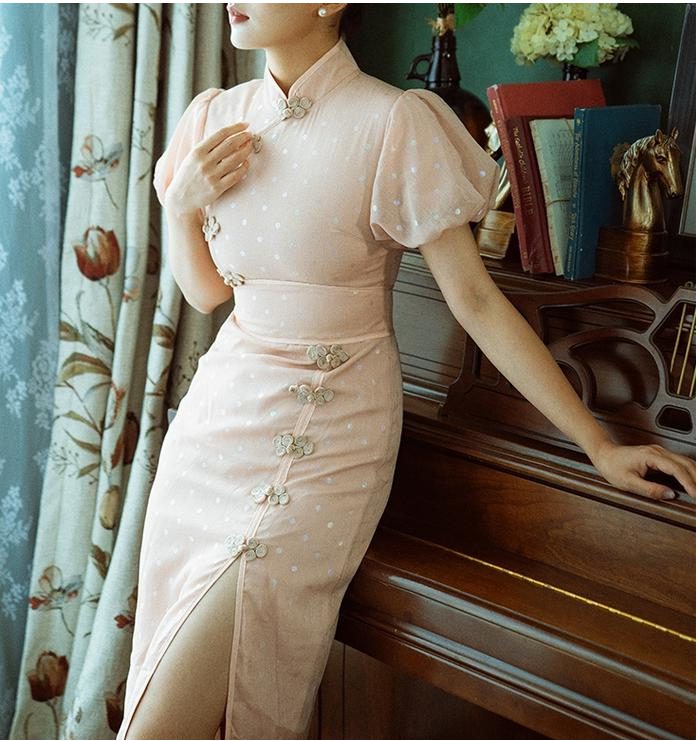
Perfecting the Look: Modern Cheongsam Styling Tips
Attire and Fabric Choices for Today’s Cheongsam
The modern cheongsam offers a plethora of choices in terms of fabrics and prints. While silk and satin remain popular for their luxurious feel, cotton and linen provide breathability and a casual touch that suits daily wear. The richness of the cheongsam also allows for bold patterns and colors that reflect current trends, ensuring the garment remains relevant in the fast-paced world of fashion. Paying attention to details such as lining and finish can elevate the look and feel of the dress, making it a cherished item in any wardrobe.
Accessorizing the Modern Cheongsam
Accessories are integral in complementing the modern cheongsam without overshadowing its inherent beauty. Minimalistic jewelry such as stud earrings or a delicate necklace can add sophistication, while a statement piece can act as a focal point for simpler designs. The choice of shoes can vary from elegant high heels to chic flats or even sneakers for an edgy, contemporary vibe. The key is to enhance the modernity of the cheongsam while remaining true to one’s personal style.
Makeup and Hairstyling for the Contemporary Look
The beauty of the modern cheongsam can be further accentuated by appropriate makeup and hairstyling. A clean and fresh makeup look with subtle highlights can emphasize the modern elegance that the cheongsam represents. Hairstyles can range from sophisticated updos to relaxed loose curls, depending on the occasion and the desired effect. The aim is to create harmony between the outfit and the wearer’s overall presentation.

Enriching Culture: The Cheongsam in Today’s World
The Cheongsam as a Cultural Ambassador
The modern cheongsam plays a significant role in cultural exchange and understanding. As an instantly recognizable emblem of Chinese heritage, it serves as an excellent medium for sharing the richness of Chinese culture. Fashion runways, international diplomatic events, and multicultural festivals often feature the cheongsam, cementing its position as a cultural ambassador that conveys a message of diversity and inclusivity.
Embracing the Cheongsam in Everyday Life
Gone are the days when the cheongsam was reserved for festive occasions and formal gatherings. The versatility of modern designs has made it a viable option for everyday attire. By blending practicality with elegance, the cheongsam has become a unique alternative to the conventional Western-style dress or office wear, empowering women to infuse their daily lives with a touch of tradition and sartorial distinction.
The Cheongsam’s Role in Modern Celebrations
The cheongsam remains a popular choice for weddings, Lunar New Year celebrations, and other special events wherein cultural significance is cherished. Modern design elements, such as innovative cuts and contemporary fabrics, provide a bridge between honoring tradition and showcasing personal style. As the cheongsam enjoys popularity among brides seeking to honor their heritage while asserting their modern aesthetic sensibilities. Wearing a cheongsam for such events has become a statement of cultural pride and a testament to the timeless relevance of this storied garment.
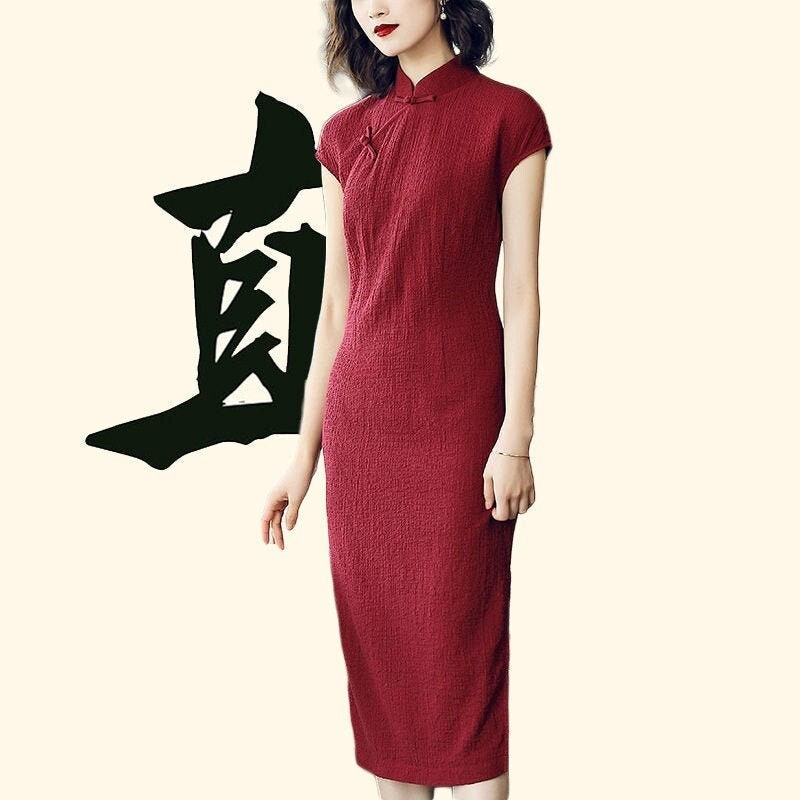
Preserving Tradition While Innovating
Balancing Heritage with Contemporary Demands
While the cheongsam has undeniably adapted to the needs of the modern wardrobe, it continues to retain elements that reflect its ancestral roots. Classic motifs such as dragons, phoenixes, and floral patterns are reimagined in present-day cheongsams, satisfying a longing for cultural authenticity amidst the ever-changing fashion landscape. Designers find ways to integrate these traditional symbols into modern prints and cuts, crafting dresses that resonate with wearers across generations.
Sustainable Practices in Cheongsam Production
Today’s conscious consumer values sustainability and ethical production, which has influenced the modern cheongsam industry. Designers and manufacturers are increasingly embracing eco-friendly materials and responsible labor practices. The use of organic fabrics and dyes, coupled with a focus on craftsmanship and longevity, ensures that the modern cheongsam not only looks and feels good but also aligns with a more sustainable and conscience-driven approach to fashion.
Education and the Cheongsam
With a surge of interest in traditional garments, educational resources have become key in understanding and appreciating the cheongsam’s background and significance. Workshops, exhibitions, and cultural events aim to educate the public about the dress’s historical context, construction techniques, and its evolution. This knowledge not only deepens the wearers’ connection to the dress but also fosters an appreciation for cultural heritage and the craftsmanship involved in creating each piece.
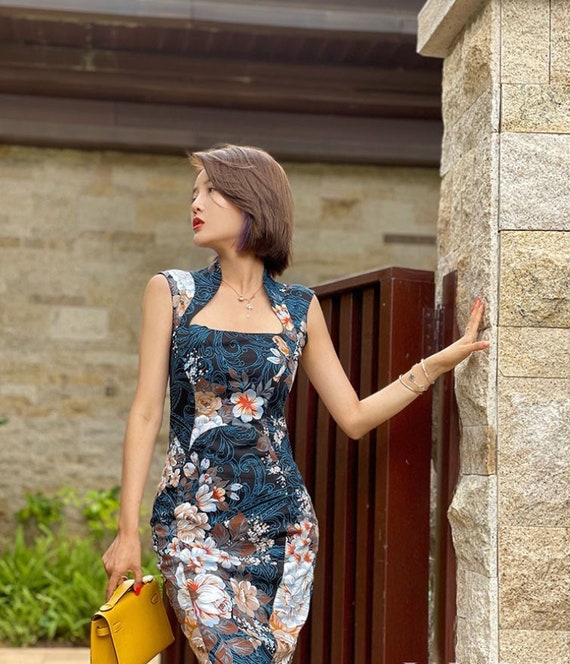
The Contemporary Cheongsam’s Impact on Fashion and Culture
Inspiring Future Fashion Trends
The modern cheongsam continues to inspire and influence fashion designers and enthusiasts worldwide. Its enduring design elements and the ability to merge with current trends lend to its perpetual reinvention, ensuring its ongoing relevance in the fashion world. From haute couture collections to ready-to-wear lines, the influence of the cheongsam silhouette and aesthetics is evident in diverse fashion spheres, offering a template for blending tradition with innovation.
The Role of Technology in Cheongsam Evolution
Technology has played a pivotal role in the evolution of the modern cheongsam. Advances in textile production, digital printing, and online retail have made the cheongsam more accessible and customizable than ever before. Consumers can now select from a wider array of designs, personalize their cheongsams to fit their preferences, and have them delivered globally, bringing the cheongsam to a broader audience and allowing for a continuous cycle of reinvention and reinterpretation.
